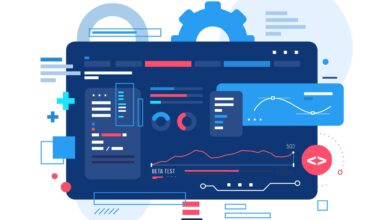In the fast-paced realm of graphic design, the tools you use can make all the difference between good and exceptional work. Whether you’re designing logos, creating web interfaces, or crafting print materials, having the right tools not only enhances your creativity but also streamlines your workflow for maximum efficiency.
Imagine being able to effortlessly manipulate images, perfect typography, and collaborate seamlessly with clients and colleagues. These tools are not just about functionality—they are the key to unlocking your full creative potential.
Did you know? Studies show that designers who use specialized software report a significant increase in productivity and client satisfaction. The right tools empower you to innovate, iterate, and deliver outstanding designs that resonate with your audience.
In this blog, we’ll delve into five essential graphic design tools that are indispensable for every designer looking to excel in their craft. Whether you’re just starting out or a seasoned professional, mastering these tools will set you apart and elevate your design capabilities to new heights.
1. Adobe Photoshop
Overview
Adobe Photoshop is a versatile and industry-standard software used by graphic designers, photographers, and artists worldwide. It allows users to manipulate, enhance, and create images with precision and creativity.
Key Features
- Layers: Enables stacking and organizing different elements of an image, allowing for non-destructive editing.
- Masks: Used to selectively hide or reveal parts of an image without permanently altering the original.
- Filters: Offers a wide range of artistic and practical effects to enhance photos and create unique visuals.
Why It’s Essential
Adobe Photoshop is indispensable for several reasons:
- Photo Editing: It offers powerful tools for retouching, color correction, and manipulation, making it ideal for photographers and photo editors.
- Digital Painting: Artists can use brushes, textures, and blending modes to create digital artwork with intricate detail.
- General Design: From creating web graphics to designing marketing materials, Photoshop provides the tools needed to produce professional-quality designs.
Mastering Photoshop allows designers to unleash their creativity, achieve precise results, and effectively communicate visual concepts, making it a cornerstone of graphic design toolkits worldwide.
2. Adobe Illustrator
Overview
Adobe Illustrator is a powerful vector graphics editor developed and marketed by Adobe Inc. It is primarily used by graphic designers to create illustrations, logos, icons, typography, and complex artworks that can be scaled infinitely without loss of quality.
Key Features
- Vector Graphics: Illustrator is based on vector graphics, allowing designers to create scalable and resizable artworks. This makes it ideal for both print and web design.
- Pen Tool: The Pen tool in Illustrator enables precise drawing and editing of paths, which is essential for creating detailed illustrations and graphics.
- Typography Tools: It offers robust typography tools for manipulating text, creating custom fonts, and designing visually appealing typography compositions.
Why It’s Essential
Adobe Illustrator is essential for graphic designers because:
- Logo Design: It allows designers to create logos with crisp lines and shapes that can be resized for various applications without losing quality.
- Icon Design: Icons created in Illustrator are sharp and scalable, making them suitable for use across different platforms and screen sizes.
- Scalable Graphics: Whether designing for print or digital media, Illustrator ensures that artworks maintain their quality and clarity when resized, ensuring professional results.
By mastering Adobe Illustrator, designers can unleash their creativity, create intricate designs, and produce visually striking graphics that enhance brand identities and engage audiences effectively.
3. Sketch
Overview
Sketch is a popular vector graphics editor designed specifically for macOS. It has gained prominence among UI/UX designers for its user-friendly interface and focus on creating digital design prototypes and interfaces.
Key Features
- Artboards: Sketch uses artboards to organize designs for different screen sizes and devices, facilitating responsive design and efficient workflow management.
- Symbols: It allows designers to create reusable components (symbols) that can be easily updated across multiple artboards, ensuring consistency throughout the design process.
- Prototyping Tools: Sketch offers prototyping features to create interactive prototypes and preview how designs will behave and look when interacted with.
Why It’s Essential
Sketch is essential for UI/UX designers due to several reasons:
- UI Design: Its intuitive tools and interface make it ideal for designing user interfaces with precision and speed.
- Prototyping: Designers can quickly create interactive prototypes to visualize and test user flows and interactions, improving usability and user experience.
- Collaboration: Sketch supports plugins and integrations with other tools, enhancing collaboration and workflow efficiency among design teams.
Due to its focus on digital design, prototyping capabilities, and collaborative features, Sketch has become a preferred choice for designing web and mobile app interfaces, making it a valuable tool in the toolkit of modern UI/UX designers.
4. Figma
Overview
Figma is a versatile web-based design tool known for its collaborative features and capabilities in UI/UX design and prototyping. It allows multiple users to work simultaneously on a design project in real-time, making it popular among design teams and remote collaborators.
Key Features
- Collaborative Features: Figma enables real-time collaboration, where multiple users can edit designs simultaneously, leave comments, and see changes instantly.
- Prototyping: It offers robust prototyping tools to create interactive prototypes and simulate user flows, helping designers validate and iterate on their designs.
- Design Systems: Figma supports the creation of design systems and libraries, allowing teams to maintain consistency across projects and scale their designs efficiently.
Why It’s Essential
Figma is essential for designers and design teams because:
- Real-time Collaboration: It promotes seamless teamwork and allows designers to receive instant feedback, speeding up the design process.
- Cloud-Based Design: Designs are stored in the cloud, accessible from anywhere with an internet connection, ensuring flexibility and continuity in work.
- Prototyping and Iteration: Designers can quickly prototype ideas, gather user feedback, and iterate designs, improving the overall user experience of digital products.
Figma’s emphasis on collaboration, prototyping, and design system management makes it a powerful tool for modern design workflows, particularly in UI/UX design and product development.
5. Canva
Overview
Canva is a user-friendly online graphic design platform that simplifies the creation of visual content for various purposes, from social media graphics to presentations and marketing materials.
Key Features
- Templates: Canva offers a vast library of templates for different types of designs, making it easy for users to start with pre-designed layouts.
- Drag-and-Drop Interface: Its intuitive interface allows users to drag elements like text, images, and shapes onto the canvas, making design creation straightforward.
- Accessibility: Canva caters to non-designers and beginners by providing easy-to-use tools and resources to create professional-looking designs without technical expertise.
Why It’s Essential
Canva is essential for:
- Non-Designers: It empowers individuals without design backgrounds to create polished graphics quickly and efficiently.
- Quick Projects: Users can produce designs rapidly using templates and customizable elements, saving time on design creation.
- Social Media Graphics: It’s particularly useful for creating eye-catching graphics tailored for various social media platforms, enhancing brand presence and engagement.
With its accessible tools, templates, and drag-and-drop functionality, Canva democratizes design and enables users to produce high-quality visuals for personal, educational, or business purposes effortlessly.
Conclusion
Using these essential graphic design tools—Adobe Photoshop, Adobe Illustrator, Sketch, Figma, and Canva—is pivotal for enhancing your creative prowess and achieving professional-grade results. Each tool offers unique features that streamline design processes, foster collaboration, and empower creativity.
I encourage you to explore and master these tools to elevate your design skills. Virtual Dedicated Graphic Designers (VDGD) can further enhance your capabilities, providing dedicated expertise and support to meet your graphic design needs effectively.
Take action today by experimenting with a new tool or revisiting a favorite. Share your experiences and insights in the comments below. Let’s continue learning and growing together in the dynamic world of graphic design!


